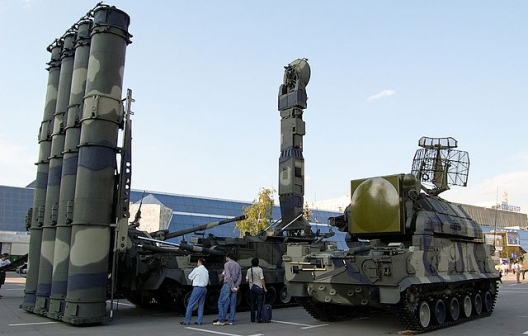 The alliance was looking at this training issue even before Vladimir Putin’s “little green men” took over Crimea. “Before even the revanchist Russia, this was one of our goals in NATO, one of the first goals I had,” [Supreme Allied Commander in Europe, Gen. Philip] Breedlove told me: “How do we reset NATO?” The International Security Assistance Force (ISAF) mission in Afghanistan will finally end this year, though US and NATO advisors will remain. “We had in our plan for NATO post-ISAF changing our exercise structure such that we are going to look at that higher-end, Article V, kinetic type of fight,” he said, “but we start from a very solid base. . . .”
The alliance was looking at this training issue even before Vladimir Putin’s “little green men” took over Crimea. “Before even the revanchist Russia, this was one of our goals in NATO, one of the first goals I had,” [Supreme Allied Commander in Europe, Gen. Philip] Breedlove told me: “How do we reset NATO?” The International Security Assistance Force (ISAF) mission in Afghanistan will finally end this year, though US and NATO advisors will remain. “We had in our plan for NATO post-ISAF changing our exercise structure such that we are going to look at that higher-end, Article V, kinetic type of fight,” he said, “but we start from a very solid base. . . .”
A major war in Europe would involve divisions or corps maneuvering on the ground, Breedlove warned the audience at AFA, and “hundreds or even thousands of sorties a day” in the air.
Nor will the air be automatically ours to command. It would be in “contested airspace,” [Commander of U.S. Air Forces in Europe Gen. Frank] Gorenc said in his AFA talk. With the long ranges of the latest Russian anti-aircraft missiles, in fact, “today one-third of Poland is under Russian IADS [integrated air defense system] coverage,” he told the audience. “Today! And there are other parts of NATO airspace where that is also true.”
Gorenc didn’t name names, but if Russia’s anti-aircraft weapons cover much of Poland — a large country which only borders Russia in the tiny enclave of Kalingrad — then they must cover 100 percent of the three small Baltic states, Lithuania, Latvia, and Estonia, which border the Russian motherland directly.
NATO needs to come to “the realization that we don’t have complete air dominance,” Gorenc told me and the other journalist afterwards. “We may have to either suppress or destroy enemy air defenses,” he said. “It’s not that we don’t have the skills, because we do, it’s just …. a mission that quite honestly we haven’t had to do a lot of.”
“We tend to take some things for granted, like air superiority,” Breedlove agreed. “In an anti-access/area denial environment” — aka A2/AD, the kind of layered long-range defense being built by Russia, China, and to a lesser extent Iran — “we would have to earn air superiority.”
In other words, we’d have to fight for it. . . .
“We have the capability,” Breedlove said. “I lot of confidence in our troops.” Of all the differences between today and the Cold War, he said with a smile, one stands out most: “Let me tell you, be very clear, the young people today are far more lethal and far more capable than we were.”
Image: Russian S-300V SAM and Tor-M1 in 2008 (photo: Vitaliy Ragulin)
